#i mean I’m already projecting my gender into fictional characters why not go wild with it
Text
I’ll be honest, whenever I start enjoying a fictional lesbian couple I start to ask myself which of them seems more transgender that I can project trans headcanons onto. Usually it’s not that difficult, but for both Marcille x Falin and Sorawo x Toriko I’ve flip flopped multiple times
#for the record I’m now firmly on the trans toriko side. not only is she taller and relatably awkward but she had queer parents#who would’ve accepted her#meanwhile Sorawo is the most autistic person in fiction so I really relate to her#but I think she was too busy with the cult thing to change her gender#Or alternatively ‘running away from my family in a cult who wants to kidnap me and make me one of them’ does embody trans themes#see this is why I flip flop#as for the dungeon meshi duo. Marcille has pathetic girl swag but Falin has autistic girl swag#however I very much relate to Falin not being particularly feminine in her wardrobe and having broad shoulders#now if you read this far you might be thinking: why not both? and you’re right#i mean I’m already projecting my gender into fictional characters why not go wild with it#and again you’re right I have no counter point
56 notes
·
View notes
Note
Autumnal asks! Cider, harvest, spice (the correct answer for which is my old living quarters you now gaze upon out the window)
cider - a food that you disliked as a child but now enjoy?
pickles. used to hate them. now I’m the “eats the pickles of everyone who doesn’t want theirs” person at restaurants (back when we still went to those)
harvest - what fictional character do you most identify with? Why?
okay I don’t want to drag myself too hard here by giving you names. but I’m sure there’s a noticeable pattern on my blog where my favorite type of fictional character is “absolute bastard with a tough exterior and some kind of angry/cool/aloof persona, who isn’t actually as tough as they project and probably actually a dumb loser nerd on the inside (with some unaddressed pain and probably a mean dad?)” ...... like a piece of bruised fruit. a particularly surly piece of bruised fruit, with an angry face drawn on it in sharpie. and it’s mad because it’s the mean little plum that’s been left at the bottom of the plum barrel.
which is not me in the slightest! I have a gooey marshmallow center, which pairs with my equally marshmallow exterior. and also my dad is great. but, you know! sometimes you just gotta love the bastards (the reminder that messy people are still loved) who have softness inside (the narrative catharsis when the forbidden soft spot shines through). I equally love “character you thought was slick is a loser nerd” as much as I love “character you thought was a bastard Hurts Inside” and I love when they’re the same person. angry fictional bastards have the most fun, I love them dearly, and I wanna watch ‘em break a little just to get put back together again. you know. for the emotional catharsis. the narrative tension.
spice - have you ever encountered a house that you believed to be haunted?
of course I have, I’m from Pennsylvania, that’s why this is going under a cut because it’s about to get LONG
first of all, I DON’T REMEMBER YOU MENTIONING THAT YOUR PREVIOUS APARTMENT WAS HAUNTED. I will wave at the ghosts from my window.
HAUNTED HOUSE: PENNSYLVANIA
But, as stated, I’m from Pennsylvania, which is Especially Haunted as far as US states go. It’s not Maine, but it’s up there. There was a ghost tour on the street that I grew up on. It was not a ghost tour for the town or for the neighborhood. No, it was a ghost tour of the street. Granted, this is the same street that once housed Washington’s troops during the Revolutionary War, so there’s a lot of ghosts accumulated. Fortunately, my house was one of the newer ones on the street (built in 1888) and it was not haunted.
But my friend two doors down, her house was built in 1750. And it was HAUNTED! (I want to note that it wasn’t even on the ghost tour. The family was asked by ghost shows multiple times if they could film there, but the mom said no because she didn’t want to annoy the ghosts).
I never encountered anything specific there myself, besides feeling completely uneasy in the older parts of the house (and that unease would instantly dissipate as soon as I went into new construction additions that had been put on the house). Especially late at night, the old parts just felt... bad. I once went home barefoot because I left my shoes on the other side of the house and I refused to cross the house alone in the dark to get them.
There was something... wrong with the basement, also. I don’t remember the specifics of this, but I remember something about the shadow of a man who only appeared on the wall in December and would proceed down the stairs over the first week of December and then vanish, or something along those lines? (I’m not still in touch with the neighbor, but I texted a mutual childhood friend, who also recalled something about a man on the stairs specifically in December without my prompting). Their dad always claimed that there were Revolutionary War soldiers buried in the basement, which I don’t think was true (there are 100+ buried farther up the street though). But I never went in the basement! It was the only part of their entire house where we NEVER went! They had a repair guy in the basement once. He left. Because he got too freaked out down there.
The mutual friend also told me she experienced weird dreams where voices told her they wanted to talk to Sarah. And she never thought anything of it, because no one named Sarah lived there. As an adult, she found out that our friend’s mom—who went by Sally and didn’t want to film ghost shows for the sake of the ghosts—was actually named Sarah. One time a bead curtain (y’know, it was the early 2000s) went absolutely WILD when no one but my neighbor was home. It may have even broken, if memory serves?
HAUNTED HOUSE: LONG ISLAND
A house we rented one summer at the beach was definitely haunted. Nothing menacing, but similar to the above, I always felt super nervous and creeped out in the old part of the house, but would feel instantly relaxed in the newer addition. My uncle smelled pipe smoke constantly, in a family where no one smoked (nor did the owners). My dog spent that summer barking at nothing (and she was not a barker, despite being a beagle). I don’t know how old that house was, but it did have a fire once because there was an article about it framed on the wall. I don’t think anyone died though? But that house had... some vibes which were not ordeal.
HAUNTED DORM: BOSTON
I believe I’ve told you the story of Shaft Girl, the ghost who opened my dorm room door my freshman year of college?
So (and there are a few college people who follow me who can corroborate this story) the dorm I lived in in college was built in 1920. I don’t remember the particulars of her origin story, but the upper floors were haunted by a ghost nicknamed Shaft Girl (I thiiiiink she was supposed to have been the daughter of an architect or engineer or something, who fell down the elevator shaft and died during construction? She definitely fell from the upper floors into the elevator shaft and died, because that’s why her name was Shaft Girl).
One time, I was watching a movie in my dorm room with two friends. One left, but I left the door unlocked in case he wanted to come back. And these were those heavy dorm room doors—the kind that does NOT stay open, they swing shut right away, and they’re generally pretty heavy and loud. So my friend and I are sitting on my bed, watching the movie. And the door opens about 45 degrees. It swings towards us, so we can’t see who’s holding the door open. But no one came in. It just... stayed open. And we go, “um.... [Friend Who Left]?”
The door closes. We immediately get up and open it. No one is there. My dorm room was at the end of a very long hallway. And no one is in the hallway. We didn’t hear any other door open or close before we looked (remembering that these are college dorm doors, so you HEAR them), and we looked pretty quickly. There’s really nowhere anyone could have GONE that quickly or that quietly. So naturally I was freaked out, the friend stayed over because my roommate had already left for winter break, I went home in a couple of days, and I didn’t think anything more about it.
THE NEXT YEAR—AND THANK GOD SHE WAITED UNTIL I WAS NO LONGER LIVING IN THAT ROOM TO TELL ME THIS—A FRIEND FROM THAT FLOOR TELLS ME A STORY ABOUT SOMETHING WEIRD THAT HAPPENED. Her dorm room was near mine at the end of the hall. She was coming home from class, the floor was pretty empty and quiet, and she stopped to look at the bulletin board. Out of the corner of her eye, she saw a girl with long hair in a white dress standing at the end of the hallway, right in front of my dorm room (and I expressed my gender very different my freshman year of college, so that conceivably Could Have Been Me). So my friend turns to say hi to me, but no one is there. She keeps walking to the end of the hallway to return to her room and... no one is there. Again, it’s the end of the hall, and there’s nowhere anyone could go without either the loud open-and-close of a college dorm door or the emergency exist stairs that set off the alarm when opened.
She tells me this one night. AND THE STORY OF MY DOOR OPENING BY ITSELF COMES RUSHING BACK. AND THAT WEIRD THING I NEVER THOUGHT MUCH ABOUT SUDDENLY TAKES ON NEW MEANING. BECAUSE HEY, APPARENTLY SOMEONE ELSE SAW A GHOST HANGING AROUND MY DORM AND WHO ONE TIME OPENED THE DOOR. Those are the only two particularly creepy incidents I know about with this dorm. But yeah. It freaks me out.
HAUNTED RESTAURANT: MANHATTAN
OH AND HOW COULD I FORGET!! I was seriously about to post this without THE BEST GHOST STORY!!! How could I forget that one time @meyerlansky and I were on a date in John’s, The Historical Gangster Restaurant You All Know And Love From Boardwalk Which Was Actually Frequented By Actual Real Life Gangsters. You know, this one (and they actually sat us at that table too, which was aaAAAA). And coincidentally, it was Charlie’s birthday. I want to clarify, we did not go on a date for Charlie’s birthday—but I was home from college for Thanksgiving break and meeting up in Manhattan was the most convenient for us at the time.
Anyway. Here we are in this historical restaurant, frequented by historical gangsters, on historical Charlie Luciano’s birthday. We talk. We eat. We pay our bill. We loiter. We talk. And then we start deliberating on whether or not we should get going.
And very suddenly, the candle on the table goes out. It didn’t look like the oil burned out, and despite being by the door/window, it didn’t feel drafty at all. Maybe the oil did burn out, but the timing of it was impeccable. It was literally “do you want to go?” /CANDLE OUT.
And we booked it out of there pretty fast! Because being paranoid people, our first thought in the gangster restaurant was that gangster ghosts were... threatening us or warning us or something. So we book it, we go home, and later that night, I’m recounting this story of being in the historical gangster restaurant on a historical gangster’s birthday and suddenly the candle goes out and—oh, I realize. That’s what you do on birthdays. You blow candles out.
SO I’M NOT TRYING TO SAY THAT CHARLIE LUCIANO’S GHOST ONCE THIRD-WHEELED ONE OF OUR DATES, but like... it’s possible. And honestly, he would.
#opheliaintherushes#that was so many ghost stories actually!#but they were fun to write#obviously getting third-wheeled by the ghost of a dead gangster is my best one#less creepy than elevator ghosts entering my dorm room at least#about me
6 notes
·
View notes
Text
tagged by @crushcandles in a beautiful circle of reciprocal memery!
birthday: august
zodiac: virgo sun / taurus moon / cancer rising; i don’t, like, Believe in astrology except in the way that some of tumblr did, for a while, which is to say, as a sort of mystical lens through which to focus one’s self-examination, but i’m told the above triad translates into ‘is a perfectionist who tries to hide eir own messiness, values stability and security and beautiful material things, has a lot of Feelings,’ which sounds about right!
last song listened to: i’ve had the amazing devil’s the horror and the wild on repeat for the last... many days, as i know many of us have, but for some reason tonight i got to thinking, all sweetly-nostalgic, about the music an almost-lover shared with me in 2014, and so the answer to this question is actually, a little anachronistically, dave carter & tracy grammer’s ‘tanglewood tree’ (i yearn away, i burn away, i turn away the fairest flower of love, which, oof is that triad painfully on point).
hobbies: …does blogging count as a hobby? i’ve loved and left a lot of art forms in my time, including poetry and classical singing; i really enjoy bicycling, and rock climbing although i haven’t been in ages, and figuring out how to use the largely exorsexist language of fashion to represent my nonbinary gender, which if not a hobby as such is definitely a project! would love to incorporate some more Making of Things into my life, though, particularly in this next housebound stretch of time—might work on turning that fannish ~queer persistence~ design concept into an actual patch or shirt or something, maybe?
last movie you watched: babel (2006), with the fam, which i wouldn’t say was exactly a Representative Viewing Choice—that said, i liked it a little more than i’d necessarily expected, although i kind of felt as though the film, idk, gestured grandly in the direction of some ideas that it wasn’t ultimately quite deep enough to fully encompass?
dream job: lmao that sure is a question! teaching, maybe? i used to tutor and i loved that to bits. previous, mostly-given-up-on answers to this question have included: classics professor; poet (not, as it turns out, actually a Job); carpenter à la @carpentrix; and just, like, being ian bostridge.
meaning behind url: any classicists reading this have already rolled their eyes and skipped to the next question, because wow did i make a basic-bitch choice of url when i made this blog, but! it’s from the iliad, whose first line in greek is μῆνιν ἄειδε θεὰ Πηληϊάδεω Ἀχιλῆος (mēnin aeide thea pēlēiadeō akhilēos), or in english ‘sing, goddess, the wrath of peleus’ son achilles,’ though why i felt, twelve years ago, that my perblog needed an ~invocation to the muse~ (since the two words i pulled are specifically the ‘sing, goddess’ bit), i cannot for the life of me tell you. tl;dr the sporadic firing of my so-called synapses is actually the ragged fusillade of the western canon.
top 4 ships: god, never ask me my favorite anything, i invariably stall out through a combination of ‘i’ve suddenly blanked on everything i’ve ever liked in my life’ and ‘are these really the most representative options out of Literally Every Possibility Ever, please hold while i do this optimization problem…’ having said that, one possible answer is something like: rms carpathia; the dawn treader; eärendil’s ship vingilótë; and then maybe skíðblaðnir from the eddas, for all your edc needs (since it folds up so it’s pocket-sized)? with honorable mentions going to the argo and to arthur’s ship prydwen from the preiddeu annwn, because i do love me some welsh-flavored arthuriana. but that response is admittedly something of a jade’s trick!
reading: uh, mostly a whole lot of geralt/jaskier fanfiction, lately! and then also the romans: from village to empire, for my sins. (the last Published Fiction i read, since i think that’s what this question is angling for, was ben aaronovitch’s false value, which—spoilers or whatever—i personally found to be much less fun than any of its predecessors, for a number of reasons including (1) insufficient nightingale (and therefore insufficient opportunity for generation gap banter, which has historically been the engine powering these books), not to mention (2) a disconcerting choice wrt how to present a trans character in text, namely ‘having the POV character actively misgender said character in their head until he introduces himself, at which time the narrative switches pronouns’: my personal feeling on this was, why not just skip straight to the introductions, and leave out the mental misgendering altogether? happy to hear out differing reactions, though.)
what food are you craving right now? not super-hungry just at the mo, but i’d take some kind of fancy sweet bun situation—a kardemummabulle, maybe, or else a yeasted bun swirled with, idk, orange and pistachio and some sort of light floral honey? or, ooh, speaking of pistachio, i could totally go for a pistachio financier, maison kayser makes a pretty great one if ‘going outside for frivolities’ is ever a tenable course of action again…
tagging: god, i don’t know, who are new people/people with urls i want explained/people i didn’t tag in the last meme? @oatplant? @giantsquidastern? @the-mirador? @designatedloveinterest? @raisedbyhyenas? @leighway? @pinehutch? @reinvent-and-believe? @obstinatecondolement? anyway no pressure, obviously, do the thing if you want and don’t if you don’t! <3
#memes#things people have tagged me in#music#tolkienarium#arthuriana#bookblogging#false value spoilers#food cw
17 notes
·
View notes
Text
Queerness and Fandom Culture:
Queer Identification through Media: A Salty Film Major™ Essay
Being queer is hard, like unrealistically hard. Being a queer film student makes it slightly less difficult, just because we tend to flock towards each other like penguins in the cold. But still, it’s hard.
This is why finding representation in our media as well as fandom spaces is so important. This essay differs from several of my essays as I’m not focusing much on a singular film or narrative but rather my own relationship with media as a queer person, and queerness in relation to fandom.
I have had a difficult time finding representation in media that wasn’t played off as something negative or as a joke, it is not until recently that queer characters have had recurring or major roles in television such as Rosa Diaz in Brooklyn 99, or the entire existence of Steven Universe and Queer Eye on Netflix.
The first time I remember hearing the word bisexual in a television show was on an episode of Law and Order: SVU, which I think is incredibly amazing and I need to rewatch, but I digress. I was in my mid-teens, about 14 or 15. A word for a person attracted to both men and women, truly fucking wild™. The thought had never occurred to me that you could be attracted to more than one gender, it threw me for a loop.
It wasn’t something I understood, bisexual was a funny word to me. Growing up in a religious Hispanic household limited my perspective of the world. What did bisexual mean? In high school I thought for a while I might’ve been asexual, and while I nothing ever came of it, it was the first step into questioning my identity. What would have helped at the time was a more positive representation in mainstream entertainment but It wasn’t so common back then, at least not in the things that interested me. I was big into Doctor Who, anime, and Sherlock (INSERT WAR FLASHBACKS HERE), My Chem, and basically any other sort of cringe thing. Except for My Chem, MCR is never Cringe.
So I was really big into the fandom community, and it really wasn’t until then that I began learning about the queer community and other perspectives than that of my own.
When I sorta admitted to myself I was bisexual, I was watching M*A*S*H, an old as hell show that is fantastic honestly. I began to interpret Hawkeye as a bisexual man, which is a bizarre way to cope I guess, but I really identified with him and I felt it made a lot of sense in the narrative. The entire point of this Essay is in fact, how fandom is a place of self-expression, and I was able to relate to characters and discover myself through them.
Which also ties into why I joke that every character I project on is a Disaster Bi. Although a lot of people may find that baffling or maybe outright hostile at the notion that a fictional character may not be heterosexual, which is like, bro chill, they are not real, let me have my fun.
Because while we live in a time more open to a representation of queer characters there is still a long way to go, and in the meantime, finding representation through character you already are attached to in some way is a way to get more of it. Though there is a trouble that comes with this:
In order to best explain this, I’m going to quote my good friend Ruth ( @ineverhadadoubt ):
“Cishet people trying to clock a character as Not Straight will always be uncomfortable and fundamentally different from queer people seeing themselves in characters and claiming them as queer”
There are non-queer people, who for reasons for shipping or something more homophobic (Re: That whole Rant I had about my Boy and Speculation on his sexuality by movie critics), who will consider a character as not straight, but to other and outcast them. Whereas when queer folks do it, it is to find a connection, a representation of a part of themselves.
9 notes
·
View notes
Text
writings about juni as an oc
30 questions about Juni (with unnecessarily long answers), from this SSO OC asks posts except i just filled it all out in one go. i want to try developing her into a more detailed character just for fun so this seemed like the best way to start! i hadn’t decided anything about her besides “non-binary and pan” until starting to fill this out hahah, i just tapped into my jorvegian feels and went along with what felt right.
this is already stated on my “about” page but, to be clear, Juni is some kinda persona/OC thingy and not “me”, while having some traits and details inspired by my real self. (you can definitely get to know about me by reading this, but, it’s not me me.)
BASIC CHARACTER INFO
(remember her details are not mine!)
Name: Juni Ravenhall
Age: around 18-20 i guess, don’t wanna make her too old to fit with the other characters in the story.
Gender: non-binary / genderfluid?, but more or less OK with her female body, and she’s fine with any pronouns.
Sexuality: panromantic pansexual.
1. What is their home stable in-game? Why?
South Hoof Peninsula (headcanon:ing that there is a home stable there, obviously) because it’s her home. While travelling she makes use of stables and accomodations anywhere, so some people know her in the places she stays over a lot (Valedale, Moorland, others).
2. Where do they actually live in Jorvik?
Her home is on South Hoof, although she doesn’t stay there for long periods of time anymore with all the travelling and adventures going on. She was born in Valedale, but was taken to South Hoof as a small child. (My headcanon is that there’s a few more people living on the peninsula than what’s shown in-game.) It’s worth noting she’s an orphan (or is she...?! *dun dun dun*) so she grew up without a biological family.
(btw, that’s not just to be dramatic... I’m from an abusive home and parents mean nothing to me, so I wouldn’t be able to relate to her as much if I gave her some kind of normal, caring parents, I don’t know that stuff. I’d much rather she has no parents / doesn’t know her parents, than that she has to grow up with awful ones.)
3. Who is their favorite NPC?
Hmm, I would make up some OCs for her proper personal story, but out of the NPCs that exist..... (these are not all my favourites, just some of them that I think works well for her story.)
- She knows everyone at South Hoof to some degree since she grew up there, I think she’s especially close with Jonas as a parent-figure of sorts, and of course, Madison. She helps the hermit and is on good terms with him. When Hugh moved there, she started making friends with him, I imagine they’ll get close as Juni really cares about animal rescue.
- She's fairly close to Conrad, mix of mentor, friend and parent-figure. (He’s taught her more than what’s shown in canon, and she visits him anytime she’s staying in Moorland.)
- She likes helping Agnetha and Björn with their garden projects so they have a friendly relation, though casual. It’s the kind of thing where she’ll stay over and help them for a few days, and at the end of the day they have cozy outdoor dinners outside the house, watching the sunset view from the cliff and smelling the roses. They probably get some great fresh food from around Silverglade.
- I think she's somewhat friends with Ed at Wolf Hell Inn (or stays over and sees what crazy stuff he’s up to often enough).
- She definitely likes Rania and like going out for rides with her, whether there’s a special cause or not. I forget the name of that crazy ranger girl... but she likes her and Alonso too.
- She likes hanging out with Mario, and they’ll have picnics on the mountain or on top of the observatory after she’s been helping him out, watching the stars together (platonically).
- She’s a wary friend of the Bobcats and Justin, like, they could be friends (since she’s at Moorland often enough) but they aren’t quite. I think she gets along with Josh (pole bending guy).
- I was going to write about the soul riders and druids... but I think in my made-up headcanon, Juni's situation and role in the soul rider team would be different. I’ll have to think more about it.
4. Who is their Soul Steed? What breed are they? Do they have any markings or look different in some way from the in-game appearance you could give them?
Winterborn, a Jorvik Warmblood stallion (here’s his tag on my blog). He’s a brave and loving companion, thoughtful sometimes, a bit silly and spoiled sometimes. His bond with Juni is very strong. He probably does look a bit different in my headcanon but I’d have to draw/edit it to make a decision, so let’s leave that in the air for now...
5. What is their favorite location? (Ex, Hollow Woods, Greendale, Silverglade Manor Library) Why?
- South Hoof, as her adopted home, and because of the ancient and “wild and free” energy it has. She feels relaxed and at home there, and somehow connected to the magic of the land (even before she learns about magic).
- Valedale and the surrounding areas like Hollow Woods, where she feels a nagging sense of nostalgia and belonging, a tingling mysterious feeling (similar but not the same as what she feels on South Hoof). She loves the flowers, buildings and nature there.
- Moorland Forge, for Conrad.
- Agnetha and Björn’s gardens.
- Wolf Hell Inn, she likes it there and (as mentioned) she likes seeing what weird stuff Ed is up to.
- Dino Valley, she loves the winter, the solitude, and the challenge of survival (she’s an adventurer after all).
- Crescent Moon Village, just for how cozy it is, and the Mirror Marshes, for its beauty. There’s a lot of spots around New Hillcrest and Epona she likes in general too.
- Goldenhills Valley, she loves the autumn colours and the ruins, and takes an interest in the witchcraft that she sees, starting to wonder what’s good and bad magic.
- Cape West, a cute little village to visit now and then.
- Jarlaheim, as a place to hang out and shop / rest, after a day of helping out with farm chores around the area.
- Greendale, where it seems like faeries might pop out if you’re quiet enough.
- Ydris’ circus, because she can’t help but get curious about it. (I love circus / fairground aesthetics personally... I’m one of those people who’s always loved clowns and everyone else is like “what?! clowns are creepy man!”)
- Mistfall and Firgrove are places she likes both for the nature and buildings, but she doesn’t tend to stay there long.
- The Observatory, and other spots high up with great views, like the shortcut between Firgrove and Valedale, and the secret path up the mountain in Firgrove, too.
- Aideen’s Plaza in Jorvik City, a cozy and fun place when you need a break from the countryside, especially if there’s an event / festival / market going on.
- Pandoria? -- there’s certainly something about it...
6. Who’s their favorite horse? Why?
I’m going to say Juni doesn’t own any other horse than Winterborn, at least at this time. (Obviously I have lots in-game but for this OC story it doesn’t really make sense, so let’s say the rest aren’t canon, haha. Maybe they’re horses she’ll own later in life.)
7. What are their powers? Are they stronger with one Circle over any of the others?
Hmm... I dunno, I have to think more about this one. I probably want to draw some pictures to figure out more about her relation to magic and Pandoria and all that.
8. What’s their usual style? Any favorite tack sets or color themes for them?
She likes all colours and likes putting together new outfits and tack sets of various styles, but some particular favourite colours are red and purple, and overall her style tends to be bold and graphic rather than soft or gentle. She can do soft and gentle too though, when she feels like it!
9. Thoughts about Jorvik City? How do they feel about Rania’s petition for a horse-friendly Jorvik City?
She likes it there (especially Aideen’s Plaza as mentioned), but definitely thinks that there’s such a thing as “too much city” and has to retreat to nature after some time there. A horse-friendly city would be nice, as Winterborn would probably really enjoy getting spoiled with treats at the Plaza on a warm evening, getting petted by nice strangers.
10. Thoughts about Justin? (I’m sorry, I’m curious, he shows up so much)
She pities him in a kind way, thinks he’s sensitive and immature. She wouldn’t mind being friends with him once he starts growing as a person. She also likes lasagna, so they could organise a lasagna party together with the Bobcats sometime.
11. How do they feel about the magical horse race at the circus? Did they enjoy being a horse?
While she doesn’t like how Ydris treats people, she thought it was really interesting and insane, and had a lot of thoughts about what magic is / what magic can do after starting to come into contact with all its different types (Pi, Ydris, the soul riders and druids, etc etc). Maybe being able to turn into a horse at will and gallop around with Winterborn would be really cool!
12. Do they trust the Druids? Or how do they feel about them?
Once she starts getting to know about them, she trusts them as soon as she knows Conrad is involved with them, because she trusts him. Of course she doesn’t trust them 100%, due to all the weird stuff that goes on, but she trusts that they have good intentions even if it doesn’t always come out right, or maybe the right people aren’t in charge.
13. Least favorite NPC?
That’s a tough one... let’s just say she doesn’t like when people use or abuse others. However, she believes that anyone can change and become a better person, it’s just exceptionally hard for some people (and nobody is entitled to forgiveness).
(Honestly it’s just difficult because I’m an open-minded person and I appreciate villainous *fictional* characters for their roles in a story, just as well as I appreciate the heroes and background characters. I don’t see a point in being pissy about fictional villains, they’re just part of a story, and in fiction everyone has a chance at bettering themselves. Plus, the victims of their actions are all fictional... nobody really got hurt. I wouldn’t think IRL people like Tr*mp is going to change for the better, plus even if he did he’s caused a lot of people a lot of harm, so IRL is another thing. but I can accept any character’s change and redemption in fiction because... it’s fiction, a fantasy.)
14. How do they make their money?
Before travelling she made them by doing odd jobs around South Hoof, now she does odd jobs around Jorvik. Often she’ll take a trade and do work for food and someplace to stay for the night instead of getting paid. She sells things she’s found and things she’s made now and then (having some skills in crafts).
15. How many horses do they own?
Same answer as before, as an OC she only owns Winterborn (right now).
16. How many pets do they have? What kind? What are their names?
I don’t think I want her to have any at this time, I might change my mind later. She loves the farm animals and the wild horses on South Hoof, of course, and helps take care of other people’s pets when needed. (I love my baby seal in the game though.)
17. How do they feel about the Soul Riders? Do they trust them? Feel like an outsider? Are they closer to some over the others?
I’ll have to decide on her role in the story and relating to the soul riders before I can answer that, so I’ll leave that for now. I don’t think she’s very close with any of them, if anything it’d be a somewhat good relation with Linda and Alex, I think.
18. Do they believe something mystical, magical, or otherwise strange really exists in Dino Valley? How did they feel about the leaving of the Kallter and the roar/scream/screech in the Valley?
There’s absolutely something strange about it, and her heart beats at the idea of more adventures there. The Kallters must have had a reason to leave.
19. Thoughts about Jorvik Wild Horses?
I think for headcanon OC story purposes, Jorvik Wild Horses and Starbreeds are probably the same thing? Just like, I’d go with that there’s a one type of magic horses with Jorvegian magic (or Pandorian) flowing through them, but then they can look different from each other. In the headcanon there wouldn’t be random Jorvik Wilds running around or anything, it’d be super special rare stuff like the Starbreeds are.
20. Do you think they are a Wild Whisperer? Or are they just bonded with their Soul Steed?
I’m not sure, leaning towards that she’s mostly just bonded with Winterborn. Maybe she has some level of whispering abilities but it’s definitely not one of her strongest skills.
21. What’s their favorite Jorvegian holiday or celebration?
All holidays, any excuse to celebrate, although she prefers peaceful and homely celebrations over parties or high-tempo events. Life is precious, so she celebrates every day to some degree (like I mentioned... sunset picnics, enjoying nature).
22. What do they think or feel about Pandoria? Have they or do they visit outside of the quests (using the rifts)? If they have or still do, why?
I think at the time I would place Juni’s story, she’s only starting to learn about Pandoria and is still confused and thoughtful about the different types and uses of magic. So what she’s going to think of Pandoria and what she’ll do about it would be something to figure out.
23. How has their visit(s) to Pandoria affected them? Do they have scars? Has it affected any of their life views?
See above. But also, since I want to explore Juni’s relation to magic, I’ll say I think the magic (or something else about Pandoria) might start to eat at her, and maybe she starts losing herself a bit the deeper she gets into those thoughts and the magic itself. (Hint... I think it’ll have to do with being an orphan and feeling alone and depressed.)
24. Would they ever consider working for Dark Core or believing their side?
No, I can’t imagine she would unless there was some very specific reason.
25. What or who is Garnok to them? A dark presence? A squid-like monster? A child with a ridiculously complicated jumping course (fuckin @’s Lizzy)?
I love Lizzy’s course lol, but maybe Garnok did have a hand in it... Anyway, I don’t think Juni knows anywhere near enough to have an understanding of Garnok at this point, so it’s just some vague thing the druids aren’t describing enough.
26. Do they ever go to the Disco? If they don’t, would they ever consider going? What would it take to make them go?
She goes sometimes, but she quickly gets tired of both dancing and socialising in crowds and has to wind down afterwards, maybe just sitting down at the disco balcony to look at the ocean, or heading down to the beach to lie down and rest. The evening ride back to her home on South Hoof (or to a place to stay in Moorland if the ferry stopped running) is a moment of winding-down, too.
27. Disco or Moorland Beach party?
The beach party is probably a little more chill, which suits her.
28. Are they interested in helping with archaeology or fishing?
She likes trying to do archaeology, and finds ancient (or just old) things really interesting, but she’s not necessarily the best at it. It’s something she does from time to time, or when someone asks for help. Fishing is something she’d only do when hanging out with someone else.
29. How do they feel about Igor, the waiter/manager of the Dino Valley cafe, and whom seemed interested in your horse for… “culinary reasons?”
She hopes he was joking, and appreciates his efforts in starting up the café since the Dino Valley crew is so small, and everyone needs each others’ help to survive and explore there.
30. Do they like the perpetual winter of Dino Valley or the perpetual autumn/fall of Goldenhills Valley, or is it strange to them? Do they prefer one over the other, or neither?
She likes them both, but she’s curious about what they’d look like if the seasons did change.
2 notes
·
View notes
Text

Sigh, poor package features, why does nobody like you? Why is it that internet reviewers and Disney critics and fans always seem to give you the shaft? Is it the minimized animation budget? The effort towards story and character that was forcibly driven towards wartime propaganda over actual films? The deviation of a traditional three-act structure in favor of a string of unrelated shorts woven together by a loosely connecting theme or narration? Well in a manner of speaking, it’s a combination of all three. For one thing most people I know prefer to sit down and enjoy a movie that has one uninterrupted story. And yes there are a good number of films, great ones, in fact, that play around with how the story is presented, but as of writing there’s yet to be an audience or even a filmmaker clamoring for an animated equivalent of something like Pulp Fiction.

In theory.
And of course the major factor in all this is the time period in which these movies were made. I’ve already talked about this in my review of The Adventures of Ichabod and Mr. Toad but for those not on the uptake, THERE WAS A FREAKING WORLD WAR WHILE THIS WAS GOING ON. Disney couldn’t afford to do something on the scale of Pinocchio or Fantasia or even Dumbo because his best animators were A, drafted out to fight, B, struggling to work with what little resources they had when the government was also pushing them to remind the public to buy bonds, or C, kicked out because of the disastrous animators’ strike of the early ’40’s. Projects with linear narratives that were considered big scale like Alice in Wonderland, Peter Pan, and Lady and the Tramp were put on hold for virtually a decade. The best they could do was package a bunch of fun little shorts together because releasing them individually wouldn’t bring in as much desperately needed revenue as a full feature would.
And who says these shorts are bad? I don’t! At worst they’re fluffy little time fillers, but at their best they can hold their own with the big leagues of Disney animation. Again, going back to my Ichabod and Mr. Toad review, Disney’s Legend of Sleepy Hollow is the first thing I and a good many others think of when the story comes to mind. I also have the advantage that a lot of people today sadly don’t in that I grew up with virtually all of the package feature shorts in one way or another, either through individual VHS releases or on the Disney Channel as part of shows like Mouse Tracks, Donald’s Quack Attack, or the DTV music videos. It would be years until I saw them all as they were meant to in order as one full film, but blame Disney themselves for that. It’s a Catch-22 situation when it comes to their forgotten films; Disney sees there’s not much public interest in these old movies and so holds out on releasing them for as long as possible, while the public notices Disney never getting around to releasing these movies and think it must be because they’re not worth their time. So nobody wins and we all get smothered under another avalanche of Frozen dvds.
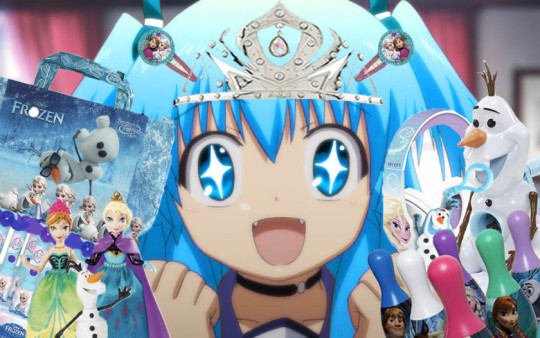
“FROZEN??!!! FROZEN FROZEN FROZEN!!!!!”
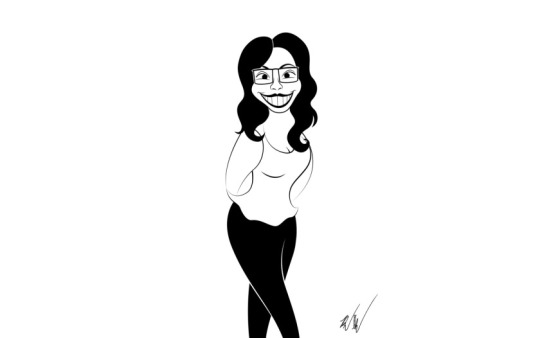
“No! Go home! You’re drunk!”
As of writing there’s only two – count ’em, TWO – Walt Disney Animated Classics that have yet to be released fully on Blu-Ray, and they’re, you guessed it, package features. “Make Mine Music” and “Melody Time” to be precise. You wanna know how old the dvds for them are? The advertisements that play before the main menu are for The Tigger Movie and The Little Mermaid 2. That’s THE YEAR 2000. NEARLY TWENTY YEARS AGO. And the only reason why today’s feature “Fun and Fancy Free” got on blu-ray is because the higher ups at Disney decided to combine it with Ichabod & Mr. Toad. So now we have a package blu-ray of two package features (three if you count The Reluctant Dragon which is also on there). It’s Package-ception, if you will. BWOMP.
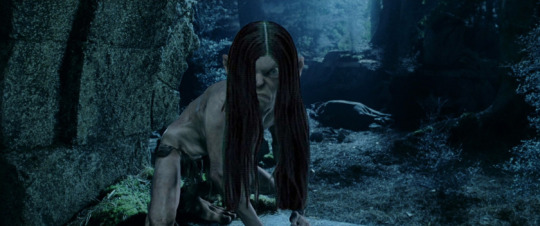
“She’ll get around to the actual review any minute now, folks.”
Back to the topic at hand, World War Two was finally winding down and the country was in a state of elation from having their boys return home after tearing the Axis powers a new one. Walt Disney had ideas for two full-length features, one inspired by a short story by Sinclair Lewis (I’d say based on but it barely resembles the tale that’s printed) and the other a take on Jack and the Beanstalk starring Mickey Mouse. Neither of them were able to get the treatment he wanted due to story issues and because the first thing to go during wars and Republican administrations is money for the arts. So he compromised by bringing them both into one movie with each of them sharing a half. Looking back I would have loved to have seen what an hour-length or even 75 minute version of Mickey and the Beanstalk would have been like because for all its flaws I enjoy it that much, and I’m tired of holding my breath waiting for Disney to do SOMETHING with “Gigantic”. Bongo on the other hand, I can’t see as anything other than a short, but that’s not a jab at its quality. Yet how do both stand up as a feature? Does it live up to what its title promises? Let’s find out.
After the main title song (which sounds like the opening theme of a variety show from that decade), we get Jiminy Cricket from Pinocchio going about his merry way in somebody’s house singing “I’m a Happy Go Lucky Fellow”. This was actually a deleted song from Pinocchio meant to be sung by Jiminy, so it’s good to hear it sung here. It proves the old adage about ideas at Disney is true; things are never thrown away, just put aside for someone to find and use later.
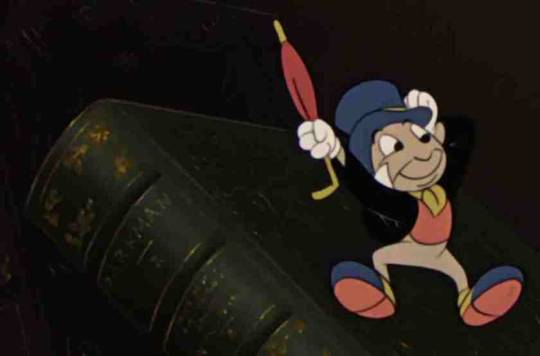
Wait, that book, is that…Darkman?! Whoever owns this library has good taste.
After startling a goldfish who resembles Cleo from Pinocchio, Jiminy concludes the fish suffers from too much anxiety and tries to reassure her by showing her a newspaper full of headlines that amount to “doom imminent, we’re all gonna die” (ah, the New York Post never changes). He explains that everyone’s been playing Nostradamus for years saying the world is going to end tomorrow but you can’t go around thinking like that. Que sera sera, whatever will be will be, you get the idea. I get where Jiminy’s coming from, I truly do, but it’s hard to back up his philosophy when he’s using real current problems as examples to ignore.
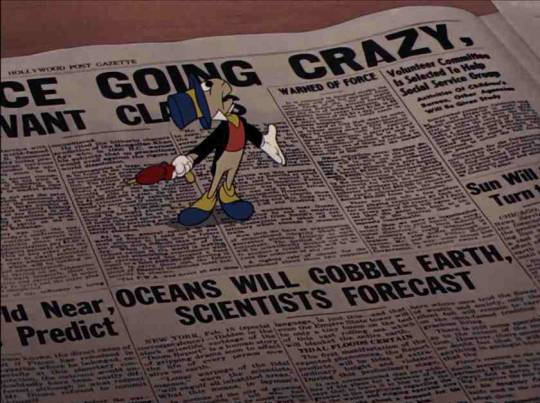
See what I mean?
Jiminy runs into a hungry cat and hides out in a child’s playroom where he bumps into a sad-looking doll and teddy bear. Assuming that all toys must be like his buddy Pinocchio he takes on the role of conscience yet again and tries to help them with their problems.
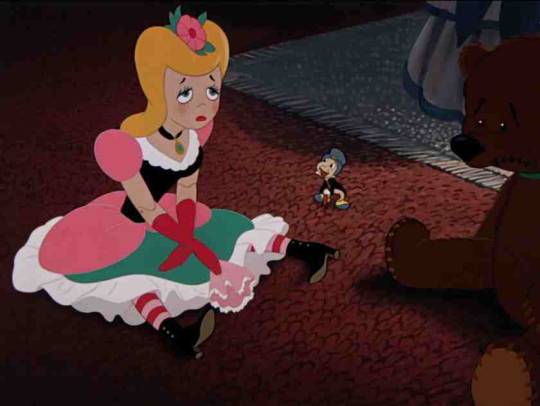
“Lemme guess, you’re wishing to become a real girl, right?” “No, I’m just disheartened by the extreme gender stereotyping that are enforced through children’s playthings and the psychological ramifications that are passed down with every generation.” “Swell!”
Jiminy’s prognosis is that these two depressed toys are in desperate need of some music and fun to cheer them up. So he whips out a record of Dinah Shore reading and singing the story of Bongo the Bear.
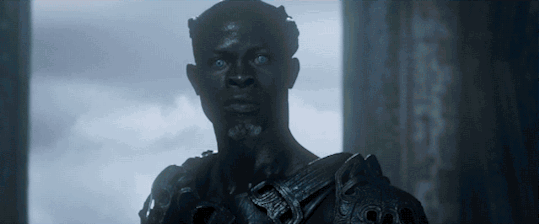

“The main character of the piece we’re about to watch, obviously.”

“No, I mean who the hell is Dinah Shore?”

“Ah. Gotcha.”
Dinah Shore was a popular big band singer of the 1940’s and one of the first female artists of her day to make a successful solo career for herself. She appeared on multiple popular radio shows, was a Chevrolet spokeswoman, won a total of nine Emmys for her various television shows and specials, and was romantically linked with stars ranging from Jimmy Stewart to Burt Reynolds. And remember Pee-Wee’s Christmas Special? She’s the woman who keeps popping in singing an endless rendition of The Twelve Days of Christmas that goes over the end credits.
This wasn’t Dinah’s first contribution to a Disney package film as she had lent her pipes to the titular song of the “Two Silhouettes” segment in Make Mine Music the year prior. She does fine as the narrator of this section, though there’s one teensy problem I have which I’ll get to eventually.
The record begins with Dinah Shore saying this is a story about three bears.

No, Ms. Shore spells it out for us – a girl bear, a big mean bear who wants to be her mate, but mostly of Bongo, a bear born and raised in the circus who’s the star of the show. Had this story turned out the way Walt originally envisioned, it would have been something of a crossover-sequel of Dumbo with the titular elephant and the catty matriarchal troupe of pachyderms providing cameos. I assume this fell through due to Dumbo’s salary demands being a little too far out of Walt’s price range.
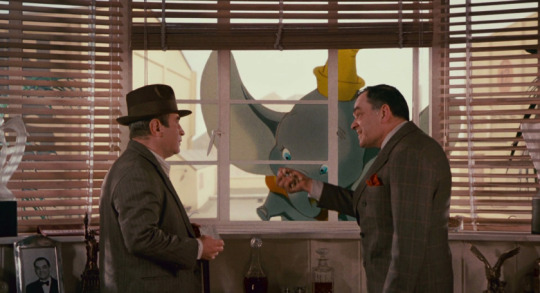
You know the war’s hit you hard when working for peanuts puts a crunch on your budget.
Bongo puts on his impressive act of juggling on a unicycle while on a high wire before making a spectacular dive. But we’re also privy to what happens when the show is over; no sooner does he back out of the tent from his curtain call than he’s manacled, hosed down, tossed into a cage and hauled off to the next state for a literal rinse and repeat. He’s the circus’ main draw, but he’s treated worse than, well, an animal.
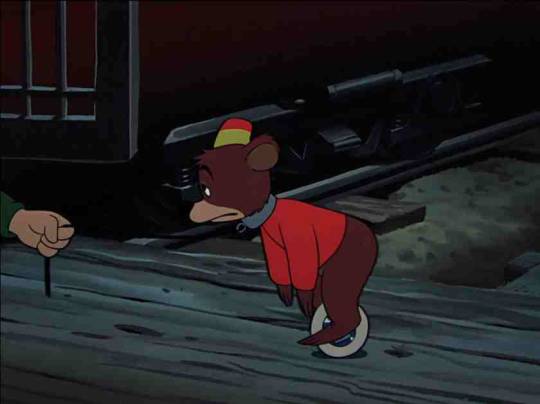
And people wonder why Ringling Bros. went out of business.
In between shows the miserable Bongo dreams of a life of freedom out in nature. We’re supposed to feel immediate sympathy for Bongo based on what we see and because Dinah Shore tells us to, but the abuse is edited so quickly and played off almost comically. They’re aiming for Dumbo’s level of emotion but we had time to get to know Dumbo and develop a connection with him. We saw him be happy, we saw him bond with his mother, we saw him befriend Timothy; almost all of that happened before he was thrust into heart wrenching drama. We barely know anything about Bongo apart from he’s a talented circus performer who’s more like a prisoner than a celebrity. Did he have a good childhood? Was his family in the same line of circus work? Does he have a favorite color?

One day the call of the wild is too loud to ignore. He escapes thanks to a very flimsy lock on the door of his train car (you think between that and how the staff treats him they’re purposefully setting up an opportunity for him to vamoose) and soon he’s zooming down the mountain on his unicycle. For the next several minutes Bongo explores his new forest surroundings and befriends the usual bevy of Disney fauna. Dinah Shore underscores Bongo’s laid back euphoria with “Lazy Countryside”, an easygoing and pleasant tune.
Unfortunately after night falls Bongo is quick to learn that the bare necessities of life will not come to you, at least not right away. Between the incessant chatter of nocturnal animals and insects keeping him awake and a storm threatening to cut his newfound life short, Bongo spends the night and most of the following morning cold, alone, and starving. His attempt at fishing like a bear should doesn’t go as hoped, but it does catch the eye of our story’s love interest, Lulabelle.

Voted “Most Likely to Awaken A New Generation of Furries” in the ’47 Disney yearbook.
I love Bongo’s reaction to seeing Lulabelle for the first time; an unmoving incredulous expression on his face as he tries to wake himself up from this vision, all the while Dinah Shore says “I must be dreaming! It’s too good to be true!” about three dozen times. The two flirt for a little while before we’re spun into the next musical number called, you guessed it, “Too Good To Be True”. It’s cute, but the floating on pink clouds, the hearts everywhere, the little cupid bears flying around, it all seems somehow familiar…

“Do the Care Bears countdown, and send a wish on to the aiiiiir…”
The song itself is nice, but there’s one that always springs to mind which I prefer. My introduction to the story of Bongo was not through a full viewing of Fun and Fancy Free or even a tape of this segment, but through DTV. See, the Disney Channel launched around the time MTV was a massive success, and wanting a little of that to rub off on them the company commissioned a series of interstitials comprised of clips from their shorts and animated films edited to classic pop, rock and blues hits and called it DTV. They basically predated the kind of fanmade music videos you see on YouTube. It was popular enough that there were even a few hour-long holiday specials built around them (mainly Valentine’s Day and Halloween). I bring this up because one of the first DTV videos I remember watching and am still fond of is Marvin Gaye and Tammi Terrell’s “Ain’t No Mountain High Enough” set to a few mountain-climbing themed shorts but primarily scenes from Bongo. And darn it, it cuts through the corniness and simply works. The imagery and overall sappiness of “Too Good To Be True” evokes every single vapid and thoroughly unsubtle Valentines Day product that is churned out en masse that time of year. No, wait, it’s not Valentines Day level of beating you over the head with glamorized romance. It’s Defcon 5, people – it’s LOVE DAY.
So Bongo and Lulabelle are happily in love, but it would make for a pretty dull short if it ended right here. Looks like we’re gonna need some more conflict to get the ball rolling. Enter our third bear, Lumpjaw, whom Dinah Shore describes as “the roughest, toughest, meanest bear with murder in his eyes”.
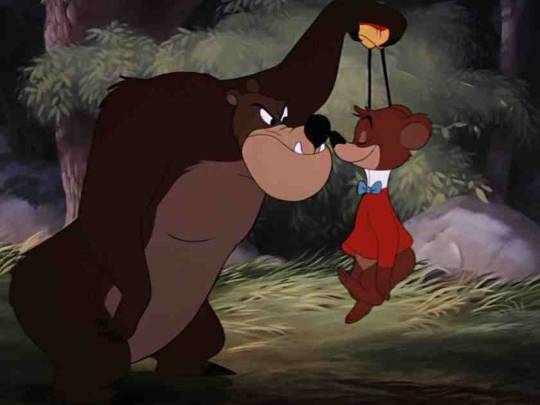
Meh, typical cartoon bear, he’s not so scar –
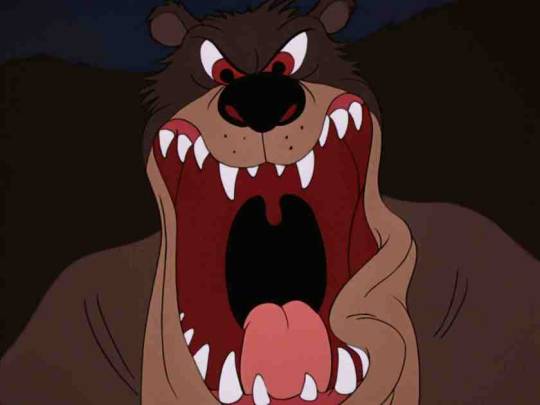
AHHHHH!! I TAKE IT BACK! I TAKE IT BACK!!
Lumpjaw is jealous that this newcomer is making moves on “his” girl, and since Bongo doesn’t know how to fight like an ordinary bear he starts getting the crud kicked out of him until Lulabelle intervenes – and slaps him silly herself.
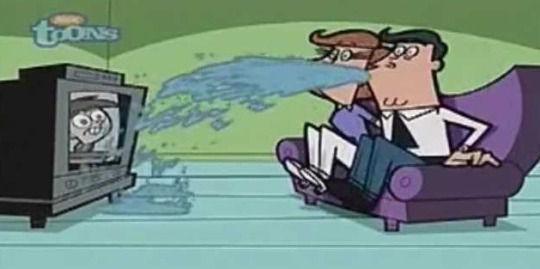
Bongo believes Lulabelle must hate him and is completely oblivious to her and the other bears watching the spectacle waiting for him to hit her back. You see in this movie, the law of the forest dictates that bears show love by hitting each other repeatedly.
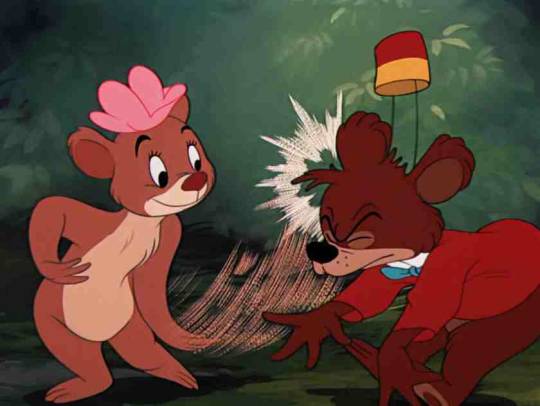
“She hit me…and it felt like a kiss…”
And oh I can already hear the wailing of “this promotes abusive relationships” through my computer screen. First off, I KNOW firsthand what an abusive relationship is, and it is more than just physical violence. That doesn’t condone violence, not one iota, but emotional/psychological abuse play a part in it as well, and Bongo is at least quick enough to recognize the smacking as what it should be, an unwarranted act of aggression that is entirely the slapper’s own fault. Second, give the kids you put this on for some fucking credit. Children’s entertainment is not one size fits all. Some might internalize this backwards logic of “hitting means love”, but others may ignore it completely. If you’re concerned that they might act out this kind of violence after watching this, just sit them down and talk to them about it instead of assuming the worst and convincing your neighborhood to toss their dvds into the nearest dumpster fire. Even if you tell them something as basic as “this is only how bears show they love each other but not how people do” they’ll be more apt to listen. Speaking of, there is some truth to this fact as bears in the mating season can get territorial and violent, hence all emphasis on the slapping. As ridiculous and horribly dated as this whole concept of this plot point is, I’ll give the story men credit that they didn’t pull it entirely from their asses.
Lulabelle doesn’t understand why Bongo isn’t hitting her back and since they can’t talk it out because the only method of communication is the narrator providing inner monologues, the usual romantic misunderstanding ensues. You know how I feel about this blasted cliche, so there’s no point dwelling on it. She tries to give Bongo one more chance with another slap, but he ducks and she hits an eager Lumpjaw instead. The other bears congratulate the two on their forthcoming nuptials while Bongo sulks off.
Then comes our next musical number performed for the half-happy couple by the tribe of bears, “Say It With a Slap”. It sounds like something you’d hear in the Country Bear Jamboree, from the background yodeling to the square dancing bridge to the subject matter being hilarious for the time and for Southerners but awkward and uncomfortable by today’s modern sensibilities. Also as far as ritualistic courtship dances go I’m more fond of the Finnish Fish Shlapping Dance myself.
Watching the festivities from afar Bongo finally puts two and two together and races back to Lulabelle. Since Bongo can’t fight Lumpjaw on the big guy’s terms he faces him like a smarter than the average circus bear and pummels him good with his unicycle. I’ll give the sequence this, it’s the most entertaining thing in this half of the picture. Maybe if this story had focused more on Bongo learning to adapt to the wild bear lifestyle and finding a middle ground between that and his circus upbringing rather than dawdle on love montages and countryside imagery this could have been a more interesting short.
The two wind up on a log on a river, and since this is an animated movie they quickly find themselves at the edge of a waterfall. Lumpjaw goes over but oh no, Bongo’s gone too – oh wait, no he isn’t, yaaaay. The bears celebrate, Bongo becomes a willing participant in Lulabelle’s masochism tango, and they live slappily ever after.
The record ends and Jiminy is pleased to see the toys are now smiling. Thrilled that he’s got two inanimate objects buying into his well-intentioned dime store philosophy, Jiminy is about to go on his way when he spies a birthday party invitation lying about and uses that as an excuse to invite himself. I’d make a complaint here about Jiminy being a gate crasher but it’s something he’s done since Pinocchio; hell, that movie kicked off with him hopping into Gepetto’s workshop uninvited looking to spend the night and messing with some of the toys there as well so nothing has changed between then and this movie.
At the house across the way is the party in question being held for Luana Patten, a Disney child star who’s also appeared in Melody Time, So Dear to My Heart, and Song of the South, usually alongside future Peter Pan Bobby Driscoll. The host is a popular ventriloquist of the day, Edgar Bergen, and his two dummies, little wiseacre Charlie McCarthy and bumbling bumpkin Mortimer Snerd. In fact, they’re the ONLY ones there. Just tell yourself Luana’s parents had to go out for the night and Bergen’s a family friend who’s babysitting and it makes this scene slightly less questionable. When Jiminy shows up, Bergen is doing one of his ventriloquism tricks for little Luana with a literal hand puppet.

This early version of Lamb Chop’s Play Along is WEIRD.
Now this scene is something that irks a lot of people, and I understand why. Bergen is often touted as the man who popularized ventriloquism but here you see his lips constantly moving. In this kind of act what impresses people is that you’re making your puppet appear to be talking WITHOUT making it obvious that you’re the one who’s doing it. The fact that his popularity got started on the radio, where NOBODY could see him pulling this off is especially baffling. I suppose what Bergen lacked in innate talent he made up for with a good sense of comic timing and his fairly likable if simple characters. Speaking of, Charlie and Mortimer are odd to be sure, and I see why some find them off-putting with their big unblinking eyes and noticeable slits around their large mouths, but personally speaking I’ve found certain Muppets to be much creepier than these dummies. Despite all this, I can’t hate the guy or his weird looking puppets or their questionable placement in this movie.
And you wanna know why?
Because if it wasn’t for Edgar Bergen, we wouldn’t have Jim Henson.
I kid you not.
Henson was a huge fan of Bergen as a child, and it led to him wanting to become a puppeteer. I think we all know how that turned out. It’s enough that as a way of showing his appreciation to Bergen he gave him and Charlie McCarthy a cameo in The Muppet Movie and dedicated it to him after his passing.
Bergen decides to regale the company with the story of Jack and the Beanstalk. When you think about it, Jack and the Beanstalk is a hard tale to tell, not because it’s been done so many times before but because there’s so few good versions out there. Let’s get one fact straight, Jack is a TERRIBLE main character. He makes a stupid decision that nearly plunges his destitute family into further poverty, then cons and steals from an innocent housewife no less than three times and kills her husband in cold blood when he’s caught. It takes a lot to make you want to root for him, and lord knows people have tried. The Faerie Tale Theater version added a backstory where the giant was the one responsible for killing Jack’s father and stealing his family’s treasures in the first place. HBO’s Happily Ever After series and The Henson Company’s made for TV movie explored Jack’s morality by having him learn greed makes him as much of an all consuming monster as the giant. The Gene Kelly television special and the animated Japanese version both added a cursed princess in need of rescuing; the latter also went for straight out weirdness just for good measure. And then there’s the Sondheim musical Into The Woods, which told the story best by forcing Jack to face the consequences of his actions when the giant’s widow finds another beanstalk and climbs down for revenge.
So how does Disney make their version one with no questionable morals or character motives? By having their three main stars Mickey Mouse, Donald Duck and Goofy star in it, of course (if you haven’t already gotten that before). There were tons, and I mean TONS of story ideas that were tossed around when this was being developed as a full-length feature which I would have loved to have seen in the final product. One version would have had Honest John and Gideon from Pinocchio be the ones who swindle Mickey into buying the magic beans. Another one had Minnie be the queen of Happy Valley (proving that not all animated queens who don’t have ice powers have to be evil) and had her give the beans to Mickey as a way to return the dried up Happy Valley to its former glory. There were lots of gags and and creative visual concepts about the land of the giants and what would happen when the main trio got there. For a time the hen that laid golden eggs, a staple of the original story, was a part of it, and she would have been played by the now relatively obscure character of Clara Cluck! Unfortunately everything had to go when the war started and the budget got slashed. And that’s not the only thing that went with it. This short would be the last time Walt Disney would provide Mickey’s voice as his smoking habit was beginning to affect his performance. After this he would pass the torch to the studio’s sound effects wizard Jimmy McDonald.
Bergen opens the tale in the magical land of Happy Valley and we see Luana imagining it in her mind as he builds on details like babbling brooks, lush farms and a splendorous castle overlooking it all. And in that castle lives the key to Happy Valley’s success, a magical singing harp (Anita Gordon). She sings the lovely “My What a Happy Day”. I really like this song; some have told me it’s the sound of blandness, but I can’t hear them over the innocent joy it infuses me with. Maybe it’s the fact that I grew up with this particular short that makes me enjoy it so much. My VHS copy had the story narrated by beloved Wonderful World of Disney character Ludwig Von Drake with bookends featuring him and Herman the Bootle Beetle, and I watched it all the time. It was my childhood.
According to Bergen the song of the Harp casts a spell of prosperity and happiness over the land, which admittedly raises one potent question: The enchanted prosperity I can get but is the happiness a side effect, or is it enforced like that one Monty Python skit where everyone in that Happy Valley has to be happy all the time or else?
Of course the story would go nowhere if it was constantly this happy which leads into my favorite exchanges between Bergen and Charlie:
Bergen: It was too good to last –
Charlie: I knew there was a catch.
Bergen: For one day –
Charlie: They built a schoolhouse.
Out of the blue an enormous shadow creeps over the valley like a storm cloud (complete with actual thunder and lightning too) and snatches the Harp from the castle. Without the Harp’s music Happy Valley decays into a barren wasteland that no amount of song can salvage.

And Lord knows they’ve tried.
We check in on Mickey, Donald and Goofy, three starving farmers with nothing to their name but a dried up cow, a crust of bread they have to slice paper thin, and a solitary bean. It’s a darkly comic sight, one made even more tension-filled and humorous when it’s filtered through the narration…
…in the Von Drake version.
Yeah, while we’re on this topic I might as well go into why I prefer the one with Von Drake narrating over the original. The main problem I have with Bergen is the same I have with Dinah Shore’s voiceover in the Bongo section, yet by comparison Shore is barely a nuisance. You want to know what that is?
BERGEN.
NEVER.
SHUTS.
THE HELL.
UP.
Everything he adds to the proceedings is already plain to see before us, and when he isn’t talking about the current action on screen or trading barbs with Charlie McCarthy he’s going into what the characters must be thinking or feeling at that moment. It’s not like film is a visual medium where we can draw our own conclusions based on what we’re viewing and our prior knowledge of the characters, oh no, we have to be told everything like we’re children. Oh wait, we don’t, because I watched the Von Drake one when I was a child and I knew what was going on without him telling me every five seconds! The Von Drake edition knows when to clam up and let what’s happening speak for itself. It allows this half of the movie to breathe and lets us take in some good atmosphere and music where there was once constant voiceover. On top of that, Von Drake’s delivery hits all the comic beats while Bergen’s is rather dry. The original Mickey and the Beanstalk from Fun and Fancy Free has cleaner scene transitions as well as moments that were edited from the Von Drake edition since that was taken from television, but half the charm comes from Von Drake and Herman; that and the previously mentioned amount of narration makes their take the superior version.

“Wow…I never realized how much I needed to say all that.”
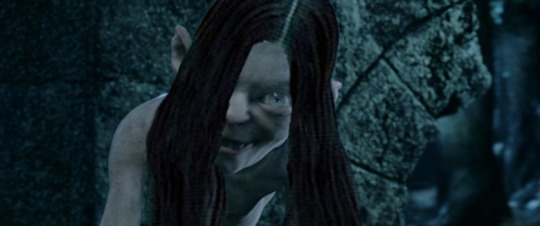
“Felt good, didn’t it?”

“You have no idea, Cynicism.”
Anyway, caught between starvation pangs and an omnipotent voice incessantly stating the obvious, Donald finally snaps and attempts to make a sandwich out of the plates and cutlery. Goofy and Mickey bring him back to his senses, or so it would seem.
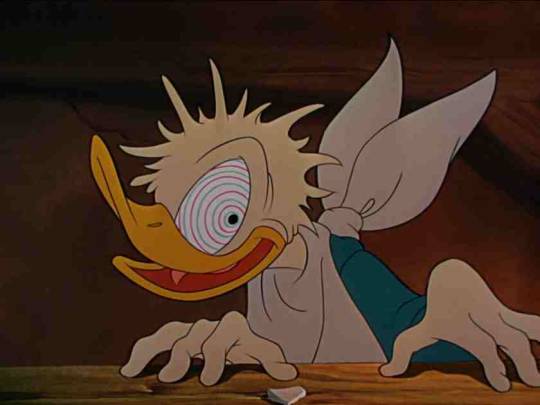
Ah, I knew this movie was lacking something – nightmare fuel!
Mickey spies the axe conveniently hanging on the wall has gone missing nearly too late. Outside Donald is making his moves on the cow.

Heeeeeeere’s ducky!!
For many people this is one of the scariest moments in Disney cinema. While I’m not inclined to agree I can surely understand. His slow descent into madness is framed almost like a psychological thriller. Plus, we all know Donald’s had a temper before but we’ve never seen him flat-out attempt murder…almost.
I’d like to point out that in the picture on the left the gun is going off in a crowded theater. Unfortunately the timelessness of Disney’s films doesn’t always apply to their early shorts.
Mickey and Goofy intervene in the nick of time and the story fades back to the puppet party. Charlie is all up for Donald murdering the cow to survive and lists a number of increasingly gruesome ways to pull it off over Luana and Mortimer’s distressed protests. Ok, NOW I think I understand why everyone is terrified of Charlie McCarthy. The kid’s a little wooden sociopath.
After some more blathering, Bergen gets the story back on track and tells us Mickey went to go trade the cow for some much needed vittles. But Donald and Goofy’s dreams of a Be Our Guest style feast are dashed when he returns home with nothing but a handful of beans. Donald goes berserk even after Mickey says they’re supposed to be magic and smacks them out of his hand where they fall into a hole in the floor. Yet as everyone sleeps that night, light from the full moon shines into the house, which is the very thing needed for the beans to work their magic. The whole sequence where the beanstalk grows through the entire house and raises it up to the sky is a highlight. It begins with an almost sinister air, the beanstalk crawling its way upward and silently through the dark like a snake, and the wonder and music constantly builds as it climbs higher towards the heavens. Every action matches with the music, and the animation is the best in the whole movie. I must say it always amazed me that Mickey, Donald and Goofy are able to sleep as heavily as heavily as they do through the whole ordeal, especially since they get shaken around so much and come close to falling so many times. Were the hunger pains that bad that they took a heavy dose of Ambien before turning in?
The three wake up that morning in a land in the clouds where everything towers above them (and apparently they’re totally fine with their house being destroyed). They venture to a nearby castle where the only clue as to who lives there is a set of footprints each the size of a ditch. While crossing the moat Donald angers a formation of dragonflies and one dive bombs them. On the tape I had it was immediately swallowed by a jumping fish and the ensuing splash washed the friends to shore. So imagine my surprise the first time watching it in full and seeing this was a full-blown action sequence of sorts with the dragonfly going after them repeatedly and their little vessel nearly sinking. I’m guessing it was cut for time but it’s kind of a neat part.
Mickey and crew climb up the enormous stairs and sneak in the castle under the door, and all the while Bergen does not stop talking. I’m almost tempted to put it on mute when the animated characters aren’t the ones who are speaking. They come across a giant table laden with enormous food and gladly help themselves. Goofy in particular gets in plenty of shenanigans involving a bouncy jello mold. The gorging is cut short when they hear the voice of the Harp coming from a locked chest. She informs them that she was kidnapped by the giant Willie.
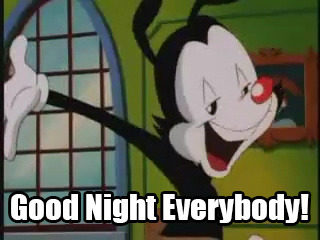
Twenty-eight years of watching this…how did I not realize… There is no way that name could have been chosen at random!
Bergen tells us Willie is “a heartless monster” who stole the Harp because “he was cruel and selfish and didn’t care what happened to Happy Valley”. And I…he…I…
No.
NO.
Screw you, Bergen.
Screw you, screw your horrible narration skills, and especially screw your picking on my Willie!


“Ugh, there’s no way around that phrasing, is there?”
Again, going back to the Von Drake edition, they painted Willie in a much kinder light, one that’s more true to his character. He’s not the crude, gluttonous, overly violent thug like past giants. He’s big enough to pose a threat but he’s silly and very endearing, almost childlike at times.
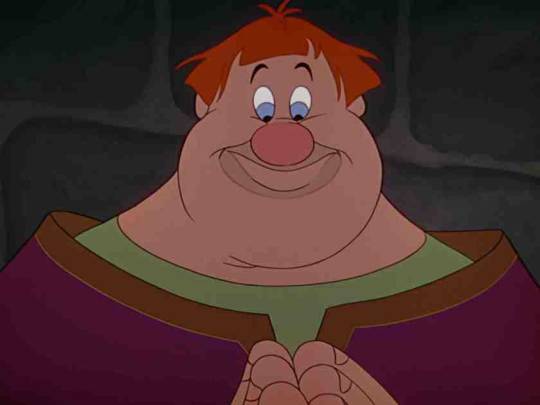
Come on, does this even look cruel, selfish and wicked to you?
His goofy voice plays a part in it as well thanks to Billy Gilbert, the same actor who voiced Sneezy in Snow White and the Seven Dwarfs. At one point he even gets to do his trademark over-the-top sneeze. Willie does not seem at all like a cold-hearted brute who would leave an entire kingdom to rot for his own selfish pleasures. It’s highly likely he didn’t even know the Harp was needed for the land to thrive and was completely ignorant to the fact that Happy Valley was turning into Death Valley without her. That’s why it bugs me when he’s lumped into the group of Disney villains. Nearly every bad guy in the canon either openly embraces how evil they are or do what they do because they believe it is the right thing. Willie falls into neither category; most of his maliciousness is incidental rather than intentional. If you don’t believe me that he isn’t evil, look at how he’s portrayed beyond this movie. In a bout of perfect casting, he plays the friendly and jovial Ghost of Christmas Present in Mickey’s Christmas Carol. He’s also made positive appearances in shows like House of Mouse and Mickey Mouse Clubhouse. Maybe it’s just because I’ve always had an affinity for big tough looking characters who are really enormous marshmallows (wait until you see who my favorite character is when we get around to reviewing the American Tail movies), but I can never see Willie as a true villain, and that’s a good thing. So back off, Bergen. He may be a big galoot, but he’s MY big galoot.
What also separates Willie from the giants in most other adaptations is that he has the ability to change himself into anything he wants provided he says or sings the magic words “Fee Fie Fo Fum”. A common complaint with this new feature is that it’s completely unnecessary; his superpower is that he’s already big and strong, so why give him magic? I disagree. I like his transformations and think it adds something special to him. Walt purposefully wanted to create a combination of the traditional beanstalk giant and the shape shifting ogre from the fairy tale Puss in Boots to add more danger and intrigue to the story (as well as eliminate the moral quandary of making a side character a widow). In fact one has to wonder if this means Walt ever planned on doing an animated take on Puss in Boots someday. My only wish is that Willie’s powers were utilized more as it was originally planned in both his song and the first draft of the ending, where he’s shrunk down to normal size and becomes a member of Queen Minnie’s court.
Willie discovers Mickey hiding out in his sandwich and snatches him. But clever Mickey has already seen Willie showcase his powers through his introductory number and pretends to learn and be impressed by that fact after reading Willie’s palm. Willie is eager to show off and Mickey, spying a flyswatter nearby, asks if he could transform himself into a housefly. Willie is of course suspicious and would rather be something like a pink bunny but goes along with it anyway. The friends prepare to attack, but Willie does the old switcheroo and exposes them.
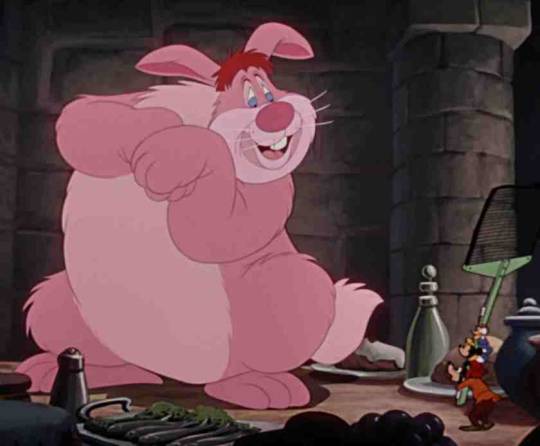
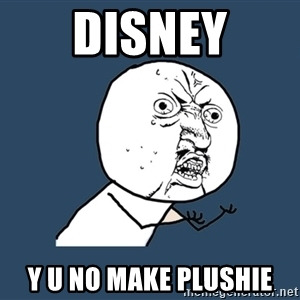
I’m guessing Mickey never bothered to actually read the original Puss in Boots story; there Puss convinces the shapeshifting ogre to turn into gradual bigger and fiercer creatures and then taunt him into becoming something small and helpless so he can dispose him. Sweat the small stuff immediately and the one you’re trying to trick will be on to you right away.
Willie captures his would-be murderers though Mickey escapes before he can get locked up with Donald and Goofy. Luckily they have an ally in the Harp, who sings Willie to sleep with the sweet lullaby “My Favorite Dream”. Mickey is able to sneak the key out of his pocket after almost waking him with an upturned box of snuff and rescues his friends. Donald and Goofy start making their way back to the beanstalk with the harp, but Mickey tries to buy them more time by tying up Willie’s shoelaces in case he wakes up. Unfortunately doing this does cause Willie to wake up and attack. There’s a surprised “Oh!” from Luana at this part that was left in on the Von Drake tape so for the longest time I assumed it was the Harp crying out in terror despite the fact that they sound nothing alike. Oops.
Mickey manages to outsmart Willie at every turn, mainly because the giant is so furious he conveniently forgot he can become anything and catch and crush Mickey like an insect at any second. The story abruptly ends with the three friends cutting down the beanstalk and Willie crashing to his death. We don’t even get to see the harp returned or Happy Valley restored or Mickey, Donald and Goofy sharing a victory high five. Mortimer’s not satisfied mainly because he’s saddened by Willie’s murder, and I don’t blame him. As if I need to repeat it, they do too good a job of making him likable that you don’t want to see him die. Bergen responds by reminding Mortimer that Willie is only a fictional character and gives him a crash course in fantasy vs. reality – one that is completely thrown out the window when the real Willie looks in on them.
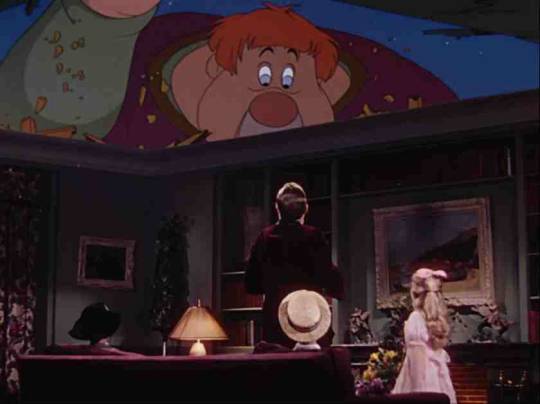

So, sentient crickets and puppets are accepted as normal as well as a living giant that everyone once believed to be fictional…
This whole movie took place near Gravity Falls.
There is no other possible explanation for this.
Bergen has the appropriate reaction and faints, Mortimer takes comfort in knowing reality is an illusion and the universe is a hologram, and Jiminy figures maybe now is a good time to get the heck out of dodge before this crossover gets any stranger. So our odd little film comes to a close as we follow Jiminy tailing Willie as he terrorizes the downtown Los Angeles area in search of the mouse who made him homeless.
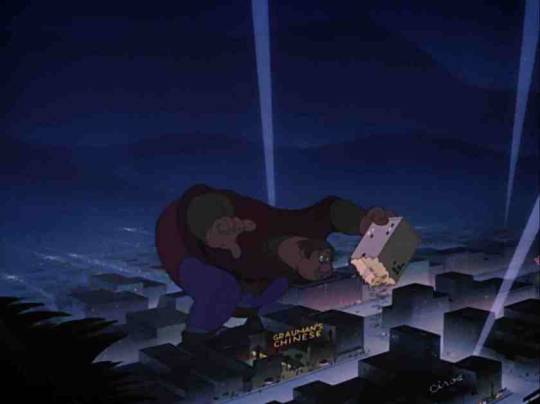
“Run!! It’s Godzilla!!” “It may look like Godzilla, but due to international copyright laws and the fact that this giant is so obviously a human whereas Godzilla is reptilian, it’s not.”
Well…that was something. Maybe not as spectacular or fully underrated as I remember, but it was something. The host parts are disjointed and don’t gel very well, even in comparison to the other package features. But the main draw at the time was less about the animation and characters and more about the celebrities that would be playing a part in it. Fun and Fancy Free basically predates the Dreamworks formula by about fifty years. Food for thought, huh?
As for my summary of the individual segments, Bongo is perfectly fine. Not amazingly humorous or gorgeously animated, but not poorly scribbled out or annoying, at least for the most part. It’s middle of the road entertainment that I don’t have much to complain about or praise. The worst I can say is that it’s as padded as my high school brassiere. Mickey and the Beanstalk, though? Never fails to give me the nostalgic warm and fuzzies. It’s a big adventure with a boatful of lovable characters and great songs. By all means though, seek out the version that has Ludwig Von Drake narrating. It’s available on dvd, and last time I checked it’s on Netflix too. It even comes with some of my favorite Mickey shorts like “Mr. Mouse Steps Out” and “Brave Little Tailor”. I know I’m not the only one who feels some connection to this part of film; whereas nobody remembers or bothers to reference Bongo, even in Disney media, there’s one or two mentions of Mickey and the Beanstalk in the Disney parks, primarily in Fantasyland. Also, take a look at these stills from the Animaniacs parody of the fairytale and tell me it wasn’t influenced by the Disney one in any way.
Fun And Fancy Free performed decently at the box office, though it was overshadowed at the time by Walt Disney’s infamous testimony at the House of Un-American Activities Committee. Now it’s merely a footnote in Disney’s history. When interviewed about the film years later, the animators openly admitted they didn’t want to work on it. Even Walt barely had anything to say about it in his interviews and biographies. It was merely an assignment they had to do in order to keep the studio afloat, hold on to their jobs, and get their mascot Mickey back in a starring role (the last one he’d really hold until Mickey’s Christmas Carol in 1983). Truth be told, the making of Fun And Fancy Free, which was included on the original VHS and DVD release, is more interesting than the film itself as a whole.
But at the end of the day, do I dislike this movie?
No, not really. I can’t call it one of my favorites, yet there are things I like about it that I wish they were allowed to expand upon. It’s an uneven film that does the best it can to be simply light and entertaining like its title. And I guess that’s why people are quick to harp (ahem) on it. Disney is capable of making great art. But just because it can doesn’t mean we should diss it when they to do something lighter and fluffier. Sometimes you need that shallow, pleasant bit of pure escapism to bolster your spirits. Do you think the animation team would have been able to get by after Walt if they didn’t make The Aristocats? Or begin recovering from the failure from The Black Cauldron without The Great Mouse Detective (which I don’t think is merely shallow filler at all, but I’m saving my thoughts for the actual review of it). I admire Disney for being able to shift gears and go from deeper subject material to goofy comic fun when need be.
In other words, when watching this particular film, just repeat to yourself “It’s just a Disney movie, I should really just relax”.
Thank you for reading. If you like what you see and want more reviews, vote for what movie you want me to look at next by leaving it in the comments or emailing me at [email protected]. Remember, you can only vote once a month. The list of movies available to vote for are under “What’s On the Shelf”.
If you want to support me and totally not get swindled into buying magic beans, please consider supporting my Patreon. It’s completely optional, you can back out any time you choose, and it comes with perks like extra votes and adding movies of your choice for future reviews. Special thanks to Amelia Jones for her contribution!
And a VERY special thank you to The Three CommentEARS for their insightful and entertaining commentary on this film which helped influence and inform this review. I’ve done some commentaries with them in the past for Pinocchio and the extended anniversary edition of Pocahontas, and they know their Disney stuff. Please go and check them out!
Caricature by Brian Slatky, 2017
June Review: Fun and Fancy Free (1947) Sigh, poor package features, why does nobody like you? Why is it that internet reviewers and Disney critics and fans always seem to give you the shaft?
#1940&039;s#Action-Adventure#adventure#animated#animated feature#animated movie#animated movie review#animated shorts#animation#beanstalk#bongo#Charlie McCarthy#Dinah Shore#Disney#disney animated#disney animated feature#disney animated movie#disney animation#disney review#Donald Duck#Edgar Bergen#Fantasy#fun and fancy free#goofy#Hollywood#Jack and the beanstalk#jiminy cricket#Luana Patten#Ludwig von drake#lulabelle
8 notes
·
View notes
Text
Get the story done already! (5/? - Friends)
I’ve already started fleshing out one of Carol’s friends (Smart Guy), as they became important to the story (With Noble), so it’s not a bad idea to begin looking at the rest of them.
I spoke previously about using the five-man band template, and going from there:
Leader: Carol Valentine (As the face). Carol is the best at operating the Mecha, and is the second-best at its maintenance and upgrades.
Lancer: This guy is probably the actual leader, or at the very least they publicly have them as the leader. I think that he’s more of a cat-herder (Like Horatio in Watch Dogs 2). Given their combat abilities, if anyone assumes that the Lancer must be Cherry Bronze, they’ll be able to hold them off until the real Cherry Bronze can arrive. I think that the lancer should be a guy, or at least a different gender than Carol, if only to make it obvious that they’re not Cherry Bronze. Although, someone might overthink things (Like I did with a Red X theory a while back…) and assume that they use some sort of voice modification as Cherry Bronze to throw people off. Cherry gets irritated that she didn’t think of doing that, but alas and alack the Lancer is not Cherry Bronze. In order for this gambit to work, Carol and Lancer have to have a lot of trust in each other. By definition, the Lancer should be more of a foil, but I think this should be more complementary than conflicting. Normally, Carol is Lancer’s secretary, and on the field, Lancer is mission control for Cherry. Lancer is probably the team’s best communications expert. I don’t know if I want to make them the best hacker, but they are definitely better than Carol. Lancer is actually a better fighter than Carol (Obviously still worse than Cherry), but isn’t better than the Big Guy.
A bold, classic heroic sounding name (Brock, Clark, Adam) would probably be best for this guy. Carol is subtle, but the Lancer is blunt. I also like the idea of using an older, family name. I kind of want to call this guy Kenneth, like Wild Weasel’s fake name back in the Phoenix Guard. So he’s Kenneth.
Big Guy: They’re a lean, mean, fighting machine! Except probably not lean, and not a machine. They can be mean, though, I don’t really want another teddy bear (I prefer to play against type or reinvent it, if possible). I haven’t even determined a setting, so I’m going to decide that being nonbinary in my world is normal. I guess Mark fought in Vietnam, but honestly I can probably change that part of the story to “Mark’s family died fighting evil alien bad guys” or something.
I also like the way Voltron went in not making the Big Guy an idiot. But at the same time, I don’t necessarily want to expand the trope in the same way. I don’t really have anyone set aside as a chemical expert yet, so let’s make the Big Guy the chemical/explosives expert. They might be more on the forensic science side. Maybe they’re an actual detective? A private eye for the agency? Carol Valentine is more of a talker/diplomat for information, but the Big Guy is the master detective who can analyze the enemy’s plans and movements to uncover conspiracies. The Big Guy and the Chick are likely friends- the Chick might be more of a Dark Action Girl, the comic relief with underground contacts- perhaps a reformed criminal? This is veering off-topic a little. The point is, that the Big Guy is a detective and a forensics/explosives expert.
As for names, we know detectives like Dupin, Poirot, Columbo, Holmes, Clouseau, etc. I’m already drawing inspiration from Detective Conan, so why not use a name from Japanese detective fiction? Rampo, instead of Edogawa. Rampo also sounds tough, like a ram. Interestingly enough, Rampo is itself a play on Edgar Allen Poe. So nobody can get mad at me for copying when the original Rampo copied his name. I’ll also use Rampo instead of the more accurate Ranpo simply because “m” seems tougher to me than “n,” for whatever reason. Probably the rams.
Smart Guy: The Smart Guy is the best there is at upgrading the Mecha, hacking, and probably most of the science stuff that goes into their agency. Although I dislike not playing with type whatsoever, I think the Smart Guy has to be a wimp on this team- I have too many people who are good at fighting and I don’t really want the Chick to be the weakest one (Emotional intelligence does not equal physical weakness!). So if I can’t play against type, then I’ll go all in on the Smart Guy. He’s the smartest smart guy there is, but a mean-looking squirrel with a rock could kill him. This also adds tension with Mr. Noble, since because Noble isn’t really the nerdy type, he’s probably fit and has some combat expertise. The Smart Guy is not going to be able to beat Noble in a physical fight, even if he gets the drop on him.
I think that instead of being concerned about his physical weakness, the Smart Guy either overestimates himself (Like Steve Rogers before his steroids in Captain America), or simply doesn’t even think of it as a concern. Maybe he doesn’t even think that going on the battlefield is a possibility. He’s likely a basement-dweller, but not an introvert. He’s extroverted and easy-going, even with strangers, but is very focused on work and thus can spend several days without human contact (Or maybe even eating) when he finds a new project, or gets inspired. He might have a genuine trust in the good will of others- perhaps the Smart Guy is taking on more of the Nick Valentine traits than Carol is. Are they siblings? I think that the Smart Guy should be Carol’s big brother. He probably also has a code name- Victor Valentine, because he likes alliteration. This is apparently an online tweed suit store, according to google, but there are several real people who have this name. I think that a character in a mecha story and a vendor of tweed suits are distinct enough that the IP shouldn’t be an issue, and I won’t be confusing any readers.
Chick: From developing the others, we know that the Chick isn’t physically weak, she’s emotionally intelligent, more of a criminal type, and possibly comic relief. She’s the rogue of the group, the lock-breaker. Victor might be the better hacker, but the Chick will just look at the post-it on the monitor to enter in the password, or maybe investigate the victim’s pet names for password clues. She comes from the poorest socio-economic background, and can keep the team grounded and focused on the real issues the city faces (The nation? I’m a little unclear on the setting’s scale, still). She’s able to connect with the criminal underground not because of her tough attitude, but because of her willingness to listen. She’s the kind of person strangers will open up to, although at times she finds it annoying to hear about a fellow bus passenger’s divorce issues. She has a lot of random skills, and is a quick learner, although she gets bored easily studying one thing for too long. She’s got the least formal expertise, and is able to do a lot of things but not describe the theory, or use the proper jargon.
She’s got a mean personality like Rampo, but unlike them, is far more willing to open up to others and be patient. I’m not sure what to do with her on names. I’m tempted to go with a more neutral name, like Alex, at the risk of seeming tacky. Maybe Lexa? I don’t think there’s very many Lexa’s, most people are Lexi if they shorten it that way. It also feels a little more modern, and I think that Lexa and Victor are all about the cutting-edge.
So in conclusion, the heroes are Carol Valentine/Cherry Bronze, Kenneth, Rampo, Victor Valentine, and Lexa. The villains are Aqua Black and Mr. Noble. Though I’m seeing an immediate problem with the names, at least with the heroes. All the names have two syllables. This is a no-go.
Victor can be Victoria (And we’ll make him a her instead, now). Lexa can be “Lee.” I may as well go all in if I’m on the fence about choosing a more neutral name for the character without seeming tacky or cliché. Kenneth can be called “Ken” by his friends. That gives us two (three?) two-syllable names (Rampo, Carol, Cherry), two one-syllable names (Ken, Lee), and one four-syllable name (Victoria). That should be enough for us to avoid the names starting to blend together. I also prefer a more “regal” name like Victoria contrasted with Mr. Noble. Cherry Bronze and Aqua Black are fine having the same word-syllable structure since their similarities are supposed to be recognized. Mr. Noble is the only one called by his last name, which should ‘feel’ different.
Next time, I think we’re ready to start looking at the character dynamics a bit more in-depth. This will open up opportunities for stories.
2 notes
·
View notes
Text
Living in the Illusion: Queer expression and relationships between fiction and physical spaces and representation
My portfolio (and effective final) for HUM4938: Media, Power, and Sexuality. In abstraction, an analysis of the role of media in portrayal and/or realization of queer characters and spaces, and its relation to the constructed fictionalization/stigmatization of queer people in real life.
Introduction
On June 24th, I landed in London. It was my first time outside of the United States, and an opportunity to study and learn a new city, a new culture outside of my own, and of course, explore my own relationship to that. But I was a student, first and foremost. I spend my week studying, going from class to class, to excursions and museums and parts of town I couldn’t even dream of finding on my own. As the days went on, so more did I see new prismic projections down the streets and up the escalators of the underground, peering through at tube stations and in coffee shops and in the alleys of Leicester square. The west end soon became a flurry of rainbows—the city, although already diverse and buzzing, was more and more colourful as it anticipated the arrival of the celebration of freedom of expression of love.
Although I’d been somewhat involved in LGBTQ+ groups and discourse in my time in high school, and certainly had gone through moments of questioning my personal identity, I’d never been to a Pride parade, or any queer community event for that matter, before. I wasn’t sure if I was meant to go; at the time, and still currently, I identify somewhere between asexual and bisexual—a demi-bisexual. Since there’s some ambiguity among the members of the LGBTQ+ community about ace and bi individuals as to where they belong in representation, activism, and portrayal, it seemed a little difficult to throw myself in the mix. In any case, my preferences have never been evocative of any particular direction or affect, and I’d been hesitant to label myself, either in fear of being wrong, or perhaps in fear of being misunderstood, judged. Quite simply, I was never really sure if I was really queer enough, so I never came out.
And so, out of pure curiosity, and perhaps with a little sense of hopeful belonging, I went the second Saturday of my trip to London Pride—it was a special event, as it was the fiftieth anniversary of the partial decriminalization of Homosexuality: a civil rights benchmark that was so significant to the progress and acceptance of so many individuals in modern society. It was a colourful event, filled to the brim with unbelievable spectacles of love, joy, happiness, exuberance, glitter, rainbows, and what seemed to be absolute magic performed by drag queens and shown by endless seas of flowing rainbow-coloured fabric, flags flying down Oxford street, highlighted by a rugby player’s proposal to his boyfriend, furthered by the unending positivity between all those who attended. I felt an innate sense of grounding in camaraderie with the people surrounding me, in the crowd and on the parade route, that I never felt before, regarding sexuality and identity, really.
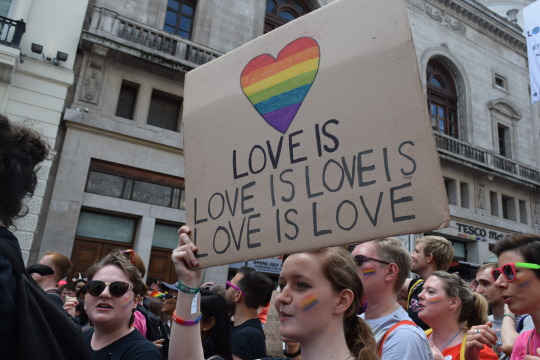
But it so too felt almost unreal—not only in the way that I was four thousand some miles away from home, but too because my understanding of LGBTQ+ history was that of struggle; up to this day. The presence of protest groups in the pride parade made a stark contrast to the parties surrounding—while the parade remained a spectacle, and celebration of what had been achieved, groups like stonewall and others were reminiscent of the original intent of pride; to make it clear that queer individuals existed, and should be treated as any other human being, through breaking that spectacle, and agitating others as to make sure they are heard, and change takes place (as Oscar Wilde noted, “That is why agitators are so absolutely necessary,”). The perfect, rainbow-coloured parade was manufactured by the many corporations that sponsored the event, and that “pink-washed” (and furthermore was a part of the depoliticisation of) what was once a political protest and communal event for demanding solidarity and equal representation. It was dismal to think, even at the back of my mind, that something so beautiful was at its foundation, (like many things) corrupt.
The day after pride, our class took an excursion to the new music biannual conference—or festival, I’m not too sure—it was the final performance of the series, a piece composed by avant-garde contemporary composer Philip Venables, featuring the London Sinfonietta and queer performance artist David Hoyle: Illusions (read more about this excursion here). It wasn’t exactly a speech pattern composition, but an orchestral interaction between parts of the text that elicited rhythm and meaning.
youtube
Although it is the title statement, one phrase did manage to stick out to me, after pride, and even continuing into further exploration of queer culture in London—Hoyle mentions of democracy in the current age (2015 was the original release of the piece, but Venables, in an interview between the performances, still noted its relevance two years later) “you know and I know it’s an illusion,”. The piece was addressed mostly to the new conservative government—but too was shown to those in attendance, ranging from any given socioeconomic class (but most likely, those who could afford a ticket were of middle or higher status) and sexuality or gender identity. So, which population experiences that illusion? Perhaps it is all those there at the moment.
This idea (moreso a conundrum) remained in my mind until now—and I thought I should explore the idea of illusion when it comes to the portrayal and understanding, as well as the identification of homosexuality and queerness in media.
Illusion (n.) - 1. a misleading image presented to the eye 2. the state or fact of being led to accept as true something unreal or imagined 3. a mistaken idea
The Illusion
So often queerness is treated as if it is illegitimate; perverse; a figment or fancy of the imagination. Homosexuality, although partially decriminalised in England and Wales in 1967 under the Sexual Offences Act, was only decategorized from major psychological association’s published texts as a mental disorder in the 1970’s—trans* folk were even more outspoken in the medical community, with gender identity disorder only leaving the volumes of the DSM-V in 2012. Being queer was to be mentally ill, and was to live in illusion, to the understanding of society.
But who truly lived in that illusion? To queer folk, their experiences were all but as real as any other. The fictionalisation, or rather, assignment to obscurity of homosexuality and queerness too fictionalised those individuals accounts and agency when it came to social action: it was (and still, to a certain extent is) harder for LGBTQ+ individuals to assert certain self-evident rights in many situations. That fictionalisation too worked against them, when they were victims of continued cultural persecution, legal prosecution, and violence from various outlets. The stigmatisation of the community and of homosexuals in media, and the cultural paradigm that had existed prior to legal decriminalisation created a heavy ideal that, still today, continues to threaten even the basic levels of hierarchical need of queer individuals, forcing them to live “in the closet”, diminishing personal mental health and relationships, fostering subversive and possibly dangerous ways of life (queer individuals more prone to homelessness, drug use, contracting STIs, prone to domestic and direct violence), taking away access, or not deeming necessary, social resources, all caused by accepting queerness as fictional, and denying the existence of quite a large portion of the population, dismissing them as unreal.
It’s no wonder, then, that queer individuals have become so accustomed to their lives being called fiction—as they have produced some of the most intricately creative pieces of artwork, literature, and music, that exist in the realm on the edge of stark, political, reality and sensual, blissful, scary, manic dream matter.
The Theatre
There is no secrecy in that the Theatre is a queer space. Not really that all people who work and live in the theatre scene are gay (as somehow, that’s become another stereotype in this weird world of ours)—but its one of the safest spaces for creatives who have different identities, historically. Among those dancers, writers, actors, and more, Vaslav Nijinsky (as discussed in the V&A Tour, post coming soon), Stephen Sondheim, on and on and on, furthermore, the material that comes out of the theatre is usually intersectional in its inclusion of different demographics, from race to identity to sexuality, and there are so many queer cult classics from the theatre world: RENT, Fun Home, Belle Reprieve, etc. etc. etc. If I had to list all of the queer creators and significant creations in the performance world, I would probably not be able to write this piece.
The Theatre is also a place where illusion itself lives. The entire concept of the theatre is a space in which one experiences a suspense of disbelief: a temporary adoption of ideas or mindsets, settings and events that aren’t necessarily true. Whether through costume, set design, make up, technical design and lighting or the sheer action and verbiage of the script, plays, musicals, reveries, cabarets, and skits involve the audience and actors in a whole mirage of make-believe. This is important.
In London especially, theatre has played an active role in queer representation and activism, if not simply by being the space for those individuals, then by creating attention. Both Stuart Feather and Jill Dolan remark in their books about the involvement of Street Theatre in the movement for decriminalisation of homosexuality, and collaboration with the Gay Liberation Front in the 1970’s. The culture surrounding the theatre here, in the west end, as well as on Broadway, is one of avid acceptance of queer art.
A indication of that culture was alive and well in the Cafe de Paris—a nightclub and performance venue in Leicester Square, which our class visited later in the week. The performance that night was the Seven Sins Cabaret—a cabaret, of course, reminiscent of the red-light district, raunchy, and alcoholic gatherings of parisian businessmen in underground bars and performance venues, and the later production between Bob Fosse and Fred Ebb, which focused on sexuality and subversive performance culture in Nazi Berlin in the Kit Kat Klub. It certainly surpassed expectations (link to post coming soon) and was a pinnacle of scintillating, slightly erotic? but completely empowered performance. Upon posting to instagram, the emcee and director of the show, drag performer Reuben “Ruby” Kaye, commented on my post, still just as enthusiastic about the openness and the stark portrayal of sexuality, and the intimacy of performance and the way it helps shape ideas and removes hurtful stigma about open sexuality.
Later, I also had the opportunity (on the last night, no less--link to post coming soon) to go to the west end and see Kinky Boots at the Adelphi Theatre. I’d never seen the musical before, but I knew it was one of the quintessential pieces from the United Kingdom that deserved a look—as well as a significant LGBTQ+ representative production, as it focused on the friendship between the protagonist, Charlie, and his opposite story centre, Lola, a drag queen who helps Charlie navigate a difficult time in his life, dealing with the death of his father, and learning how to define himself as a man, as the Mr. Price of his family business Price and Sons.
Its an incredibly liberating and relatable piece—perhaps people don’t come to the theatre to see Kinky Boots if they aren’t open-minded already, but certainly, the older ladies in the row in front of me had a wild time at the show. The most impressive pieces to me, regarding identity and sexuality, are that of Lola’s pieces—first, “Lola’s World”, in which the lyrics read “Step into a dream, Where glamour is extreme, Welcome to my fantasy,” followed by the number “What a Man” in which the roles of gender are explored and reversed, and used to empower the performer. Of course, “Just Be”, too is a fantastic pride anthem, preaching for unlimited self expression. In the show, Lola is completely open about who they are and what they are, and what it means to be them, completely breaking any sense of deceit or illusion that goes along with being a performer, a person with two identities at face value.
A Stand Out: Todrick Hall
Aside from starring as Lola in the fall/winter 2016 season on Broadway, this openly gay creator has recently risen to a relatively popular stance in the performance world—both on stage (in Oz, Kinky Boots) and in television (as a recent host and choreographer on RuPaul’s Drag Race, the creator of Todrick MTV, and contestant on American Idol) by way of his YouTube channel, which he started in 2006. A decade later, Todrick has amassed over 2.5 million subscribers.
I found inspiration for this analysis in watching some of his videos, which feature his takes on pop culture classics, like Mean Girls, Disney films such as Alice in Wonderland, Beauty and the Beast, and plays (namely Chicago, as there are several cell block tangoes) and reimagines them as hollywood, gay, and black versions of the predominantly white, straight originals.
One that stood out especially, perhaps because of its magnitude as a project (it’s a feature-length video on his YouTube), is an autobiographical musical re-adaptation of the Wizard of Oz called Straight Outta Oz—the story closely following the narrative of the original, but in this version, Todrick is Dorothy, and his story is a reflection of growing up gay, growing up black, and navigating a technicolor world. These themes are directly related to the course’s parameters: it is media, and the power involved, and how sexuality comes into play.
youtube
(If you have the opportunity, skip to ‘Water Guns’ near the end of the video)
Following what Ruby Kaye imparted in her comment on my instagram post of “Perform, Educate, Empower,” Todrick fully explores what it means to be the content creator, producer, director, and performer of queer art and media made for the masses. His art takes the illusion, whether it be from the suspense of disbelief in the theatre, the makeup of drag queens, the use of music, or simply, the line between what is fictional in literature and real life, and applies it to a wholly human and enthralling experience, not necessarily to enlighten, but to ground—to create a common space that feels safe, welcoming, and intriguing, if anything. The fictionalisation which was used against him and other queer individuals is reclaimed in fantasy.
Creators like Todrick, who are now more able to express themselves in openly queer artistic choices, are not only the future of artistic production, but are also leading the way for progress in the destigmatisation of queer identity, diminishing the illusions of obscure gender and sexuality and making them known.
Conclusion
In 2016, the shooting at the PULSE gay nightclub in Orlando, Florida, was exactly that: a display to make us realise that we were not safe. That to a certain extent, the LGBTQ+ community (especially the L, G, B) did live in an illusion of security. That we were still so far from acceptance. It only took so much hate (that had already existed, so evidently, yet that was shrouded by progress, by the spectacle of parade and celebration) to take away the lives of so many.
The line between what is real and what is illusory has always existed for the LGBTQ+ community. But for queer individuals, the distinction of either is all too clear. They are not the ones living in an illusion, but rather the ones working to shatter it.
References & Further Reading
Venables, P. (Composer), Hoyle, D. & London Sinfonietta, (Performers), Baker, R. (Conductor). (2017, July 9). Illusions. Live performance at Southbank Centre, London, United Kingdom.
Venables, P. (2015, September 19). Illusions. Retrieved July 2017, from https://www.youtube.com/watch?v=g4hJQimj45U
Ackroyd, P. (2015). Queer City: Gay London from the Romans to the Present Day. London: Chatto & Windus.
Dolan, J. (2010). Theatre & sexuality. Basingstoke: Palgrave Macmillan.
Feather, S. (2016). Blowing the Lid: Gay Liberation, Sexual Revolution, and Radical Queens. Alresford: John Hunt.
Fierstein, H., & Lauper, C. (Writers), Mitchell, J. (Director), & Oremus, S. (Conductor). (2017, July 21). Kinky Boots. Live performance in Adelphi Theatre, London.
“Illusion”. 2017. In Merriam-Webster.com. Retrieved from https://www.merriam-webster.com/dictionary/illusion
Playful Productions. (2017). Kinky Boots [Brochure]. London.
Kaye, R. (Director). (2017, July 14). Seven Sins Cabaret. Live performance in Café de Paris, London.
Milazzo, F. (2016, September 12). Review: Seven Sins, Cafe de Paris. Retrieved from http://www.thisiscabaret.com/review-seven-sins-cafe-de-paris/
To contribute further to my research, if you are queer or identify in a way that you find different to cis- and hetero-normative tradition, consider completing this survey about your experience regarding the relationship between fiction, illusion, and queerness. Please follow, and if you’re keen on contributing, citing, or collaborating further to this research, send me an ask or submit!
1 note
·
View note